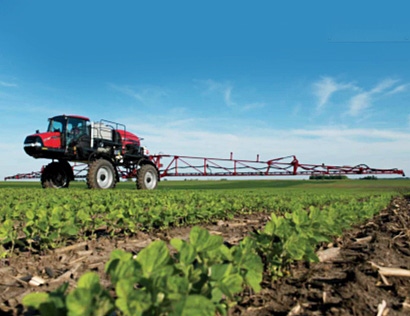
A California jury’s decision that exposure to glyphosate was responsible for a groundskeeper’s cancer could have a far-reaching impact on agriculture — and consumer food prices — should governments decide to severely restrict or ban the use of the world’s most widely-used herbicide.
In a recent article, Cameron J. English, senior agricultural genetics and special projects editor for the Genetic Literacy Project, writes that experts suggest that severely restricting the herbicide and crops genetically engineered to tolerate it would have important ramifications for farmers. A 2016 study found that genetically engineered crops account for about 56 percent of glyphosate usage. “Such a policy shift would cut crop yields, raise food prices, and cause severe environmental damage as farmers returned to older methods of weed control,” the article notes.
Food prices have dropped substantially since the introduction of glyphosate-tolerant genetically engineered crops in 1996; University of Saskatchewan Agricultural Economist Stuart Smyth says, “Across North America, the benefit … from [glyphosate-tolerant] soybeans has been calculated at more than $3 billion annually through lower food prices.”
In a study published in December 2017, Agricultural Economist Graham Brookes and his colleagues estimated that in 2015 this technology contributed “18.6 million tons, 3.1 million tons, and 1.44 million tons” to the global production of soybeans, corn, and canola, respectively.
If restrictions on glyphosate prevented farmers from planting herbicide-tolerant crops, “There would be an annual loss of global farm income gains of $6.76 billion,” Brookes and his team wrote, “and lower levels of global soybean, corn, and canola production equal to [the gains achieved since 1996].”
While glyphosate use has soared by more than 15 times since its pairing with genetically engineered crops in 1996, overall herbicide use has remained fairly constant and the per acre toxicity of herbicide use has actually gone down over the past 22 years, according to Brookes and his colleagues. The total use of herbicides on GMO crops was reduced by 571.6 million pounds of active ingredient. But with a glyphosate ban, it’s estimated there would be a net increase of 180.7 million pounds of herbicides.
Another important impact of restrictions or a ban would be on no-till and minimum-tillage farming, “Because the herbicide so effectively controls weeds,” the article notes, “farmers began to practice no-till farming en masse in 1974 when glyphosate was first introduced, well before the debut of the first genetically engineered herbicide-tolerant crops in the late 1990s.”
Brookes and his colleagues note “there would be additional carbon emissions arising from increased fuel usage and decreased soil carbon [storage], equal to the equivalent of adding 11.77 million cars to the roads … Land use changes will arise, with an additional cropping area of 1.88 million acres, of which 53 percent derives from new land brought into cropping agriculture...”
Read the entire article at https://bit.ly/2Rh0tgI
About the Author(s)
You May Also Like




